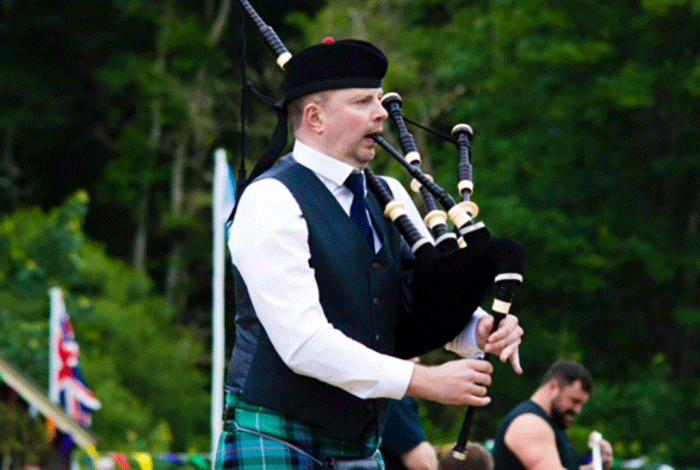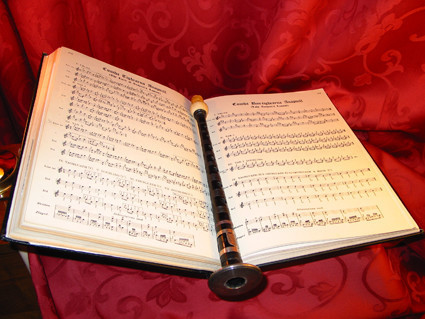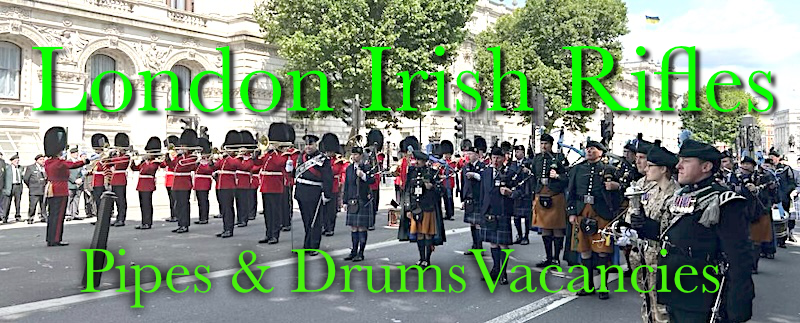
The following article appeared in the Scotsman newspaper, and subsequently the Piping Times, 60 years ago. It is by Seumas MacNeill, co-founder of the now defunct College of Piping and a Gold Medallist. He also had the ability to write about piping in a cogent, entertaining, yet deeply felt manner. This article, is of its time, yet still relevant today…..
The many visitors who attend Highland Gatherings throughout Scotland have an opportunity of observing one of our most curious customs – the encouragement of piobaireachd playing.
The outward evidence of this will appear to them as a wailing of bagpipe laments from a corner of the games field, thus providing the aural complement to the visual scene of mountains, kilted stewards, Highland dancers and caber tossers. When they tell their friends of the experience they will remember the piping only as a background, and will probably be a little puzzled as to why there was so much sad music.
By Seumas MacNeill
There are indeed many confusing features associated with the piobaireachd contest at the games. It is the first event to start, but it occupies a platform away from the main activities. It carries with it the highest prestige, but it attracts the smallest audience. It offers a chance of winning the biggest prize money, but fewer pipers enter for it than for the other piping events.
The puzzling features of piobaireachd are not confined to the gatherings, nor is bewilderment to be found in the minds of visitors only. Many Scots would be at a loss to explain exactly why the bagpipe is poorly esteemed generally by players of other instruments.
There are many reasons for this. For one thing the instrument is inconveniently sensitive to variations in temperature and humidity, and so is difficult to keep in tune. As a result it is often heard in a state far removed from its best. Again, although Scotland has thousands of pipers, only comparatively few are piobaireachd players, so most of the piping one hears is ceol beag, or little music. All classical music must be heard often before it can begin to be appreciated.
Even when the instrument is perfectly in tune and played well, many non-pipers are confused by the volume, the steady and unvarying intensity of the notes, by all that makes the Highland bagpipe what it is. Brought up on a tempered scale, they find music in the pipe scale almost as difficult to appreciate as poetry in a foreign language.
Some people assume at this stage that the bagpipe is a barbarous instrument, and perhaps we must be tolerant of their conclusion, except when they try to justify it by suggesting that no great culture could ever come out of the backward Highlands. This is to deny the glory of Greece.
Great artistic and cultural progress is always possible without a corresponding technological advance. Those who learn to enjoy ceol mor discover that the principal difference between it and other types of classical music is that it is purely melodic, whereas orchestral music is ruled by the demands of harmony.
Melodic art has great freedom both in pitch and in time. The requirements of harmony lead to music constructed in a definite key and in regular four-bar phrases. ‘Thou shalt not beat time to a piobaireachd’, says the old law – the melodic line must be allowed liberty like an eagle.
All music before 1600 was of course unmeasured, free from possible division into bars and it may be that piobaireachd is the only pure development of this art. Francis George Scott points out that contrapuntal music (such as that of Bach) tends always to become unmeasured music, and he says, ‘The greatest melodic art everywhere is unmeasured, and the best examples I have found in Europe are in Gregorian chant and the piobaireachd of the Gael’.

An attitude of defensive exclusion has grown up around ceol mor. Pipers tend to regard it as being only for the initiated, so that it is now an esoteric art. Many breakthroughs have, of course, been achieved. Alexander Campbell, a well-known writer and musician in his day, made the long journey in 1815 from Edinburgh to Glenelg to hear the last MacCrimmon play. In his diary he records his amazement and delight at the greatness of the music. He noted particularly the enormous technical demands which the music made on the performer. Mendelssohn is reported to have sat enthralled throughout a piobaireachd competition in Edinburgh during his visit to Scotland.
In his diary he records his amazement and delight at the greatness of the music. He noted particularly the enormous technical demands which the music made on the performer. Mendelssohn is reported to have sat enthralled throughout a piobaireachd competition in Edinburgh during his visit to Scotland.
Some composers, notably lain Whyte, Erik Chisholm and Francis George Scott, have been directly influenced by ceol mor. In the works of others, such as Bach and Dvorak, similarities of structure and effect can be seen.
One of the most surprising relationships perhaps is that between jazz music and piobaireachd. At first sight one might imagine them poles apart, but in structure and presentation they have a lot in common…. both favour a pentatonic scale, and in addition the tendency for a diminished seventh in jazz makes for an approximation to the pipe scale.
‘St Louis Blues’ has the characteristics of a simple short piobaireachd, but the most striking examples undoubtedly occur in informal sessions. Here an individual performer extemporising freely and working towards a climax with frequent repetition of rhythmic and melodic pattern is producing music which is basically the same as ceol mor.
‘Mutants have appeared but they have been ruthlessly exterminated.……..’
Alexander Campbell was worried lest the art should be lost to the world. His fears have fortunately proven groundless, for although conditions for piobaireachd can hardly be described as having been favourable in the last hundred and fifty years, the art has been carefully preserved.
The five generations of pipers since the MacCrimmons have jealously adhered to the styles of playing of their preceptors with what is almost a fanatical belief in the necessity for no deviation. Mutants have appeared but they have been ruthlessly exterminated.
The Act of Proscription following the failure of the 1745 Rising was a death blow to the colleges of piping in the Highlands, but it would seem that we have now nearly recovered. Piobaireachd playing has become increasingly popular in recent years, due largely to the work of the Highland Society of London, the Piobaireachd Society and, since the war, the College of Piping.
The BBC and the Arts Council do what they can, but in spite of these considerable efforts a great deal more could be done to give Scots, and visitors to Scotland, a chance of enjoying our unique musical heritage. Perhaps we may even be able, with a little more effort, to produce someone who can compose an acceptable piece of ceol mor.






















